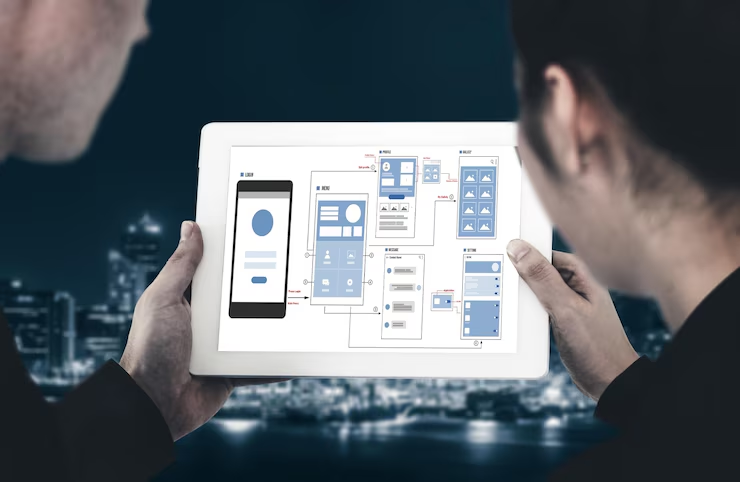Adapting to a Mobile-First Business Landscape
The rise of mobile technology has forever altered how organizations operate, interact with customers, and deliver value. Today, nearly every industry experiences an ongoing shift toward remote work, flexible schedules, and advanced digital workflows—all supported by powerful handheld and portable devices. Mobile connectivity fuels the exchange of ideas and real-time decision-making, creating vast opportunities for organizations that are prepared. However, reacting to this change with piecemeal solutions or ad-hoc device purchases can leave companies exposed and inefficient.
To keep pace, organizations need a deliberate, holistic approach that enables secure and productive mobile workforces. Many leaders now begin their modernization journey by seeking expert guidance through mobile device strategy design services, which deliver frameworks tailored to the unique requirements and threats of today’s marketplace. These initiatives go beyond simply providing smartphones or tablets to employees. Instead, they aim to establish a foundation for ongoing growth, enhanced agility, and alignment with higher-level digital transformation initiatives. From device selection and integration to security policies and ongoing management, an intentional mobile device strategy empowers teams to do more from anywhere, at any time.
Key Elements of a Robust Mobile Device Strategy
The core elements of an effective mobile device strategy serve as guardrails, ensuring every device and software solution not only adds value but also maintains the integrity of business operations. The first element is device selection and standardization. Choosing reliable devices that meet current needs while anticipating future growth is critical—standardizing platforms streamlines support and reduces compatibility headaches. Organizations should consider how device options align with the software ecosystem, network demands, and usage environments, whether in the office, field, or remote locations.
Lifecycle management is equally vital. This includes planning for procurement, upgrades, routine maintenance, and responsible device retirement, which minimizes downtime, ensures security, and controls long-term costs. It’s common for businesses to overlook lifecycle planning, only to find themselves with outdated technology or insecure devices lingering in their digital landscape.
Another pivotal factor is scalability and flexibility. As companies evolve, their mobility needs inevitably expand or shift. Strategies must provide enough flexibility to add users, adjust access permissions, and adopt new device types—all without major disruptions or budget surprises. When thoughtfully combined, these elements make up a resilient blueprint for modern enterprise mobility.
Aligning Mobile Strategy With Digital Transformation Goals
Achieving meaningful digital transformation requires that every technology initiative, especially mobility, aligns perfectly with the organization’s broader objectives. Decision-makers must view mobile devices not only as endpoints but also as powerful tools to enable real-time insights, accelerate workflows, and drive superior business outcomes. For example, when retail companies link mobile point-of-sale (mPOS) systems with inventory analytics, store managers gain better stock visibility and can quickly address customer needs. In logistics, real-time smartphone tracking provides operations managers with instant updates, reducing lost shipments and missed deadlines.
To ensure synergy, organizations should regularly review both their business and technology goals. Mobile strategies should be evaluated not only by their ability to connect people, but also by how well they support the transformation vision. Consider customer satisfaction, speed of innovation, and process automation as core benchmarks for success. Ultimately, keeping the mobile roadmap aligned with broader transformation efforts prevents wasted investments and helps the organization remain agile as needs shift.
Reducing Risks Through Thoughtful Device Management
Mobile adoption presents numerous opportunities, but also poses unique security and compliance risks. The rise in remote work, coupled with an increased reliance on mobile endpoints, has led to more frequent and sophisticated data breaches and cyberattacks. The average cost of a data breach involving a mobile device has increased each year, underscoring the importance for companies to implement robust controls to protect their devices.
The solution begins with modern mobile device management (MDM) platforms, which provide centralized control over device access, security policies, and update schedules. Organizations should enforce strong authentication, enable remote wipe features for lost or stolen devices, and keep all operating systems up to date. Comprehensive training for end-users is also essential, as many security incidents stem from simple user errors, such as clicking on phishing links or downloading unsafe applications. By pairing advanced technical controls with ongoing education and regular audits, businesses can protect sensitive information and maintain a resilient mobile fleet against evolving cyber threats.
Steps for Developing an Actionable Mobile Strategy
Mapping an actionable mobile device strategy can seem daunting, especially for large or extremely fast-moving teams. However, a methodical approach helps organizations break down the process into clear, practical steps:
- Assess current landscape: Inventory existing devices, software, and workflows. Identify pain points, gaps, and underutilized assets.
- Set transformation-focused goals: Define clear, quantifiable objectives that are directly linked to business outcomes, such as boosting field productivity or enhancing customer satisfaction.
- Select hardware and software: Choose devices and applications that work well together, are scalable, and can easily be managed through centralized tools.
- Create usage and retirement policies: Draft policies for how devices are allocated, used, monitored, and eventually retired or recycled.
- Implement security and management controls: Utilize MDM platforms to manage access, push updates, and enforce security policies from a single, centralized dashboard.
- Train users: Provide comprehensive onboarding and continuous learning around device functionality and security best practices.
- Monitor and iterate: Routinely collect feedback, audit device usage, and optimize policies and configurations to stay adaptable as needs change.
This checklist provides a clear roadmap for leaders who want to move from vision to execution, minimizing uncertainty and maximizing results.
The Future Outlook: Evolving Mobile Strategies in a Rapidly Changing World
The pace of mobile innovation shows no sign of slowing. Emerging technologies—such as 5G networking, low-latency edge computing, AI-driven apps, and enhanced biometric authentication—are redefining what businesses can achieve with handheld devices. To stay competitive, leaders should track new trends, experiment with pilot programs, and remain prepared to adjust device policies as technology and threat landscapes evolve.
Ultimately, designing mobile device strategies that are both structured and flexible is the surest way to support ongoing digital transformation. Companies that invest in foresight, adaptability, and user-centric design are best positioned—not just to meet the needs of today, but to thrive as future opportunities and challenges unfold.
Read More : The Fascinating Phenomenon of Liisbettsis Runnak

